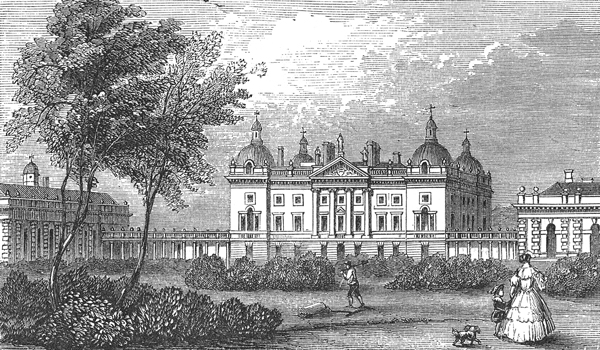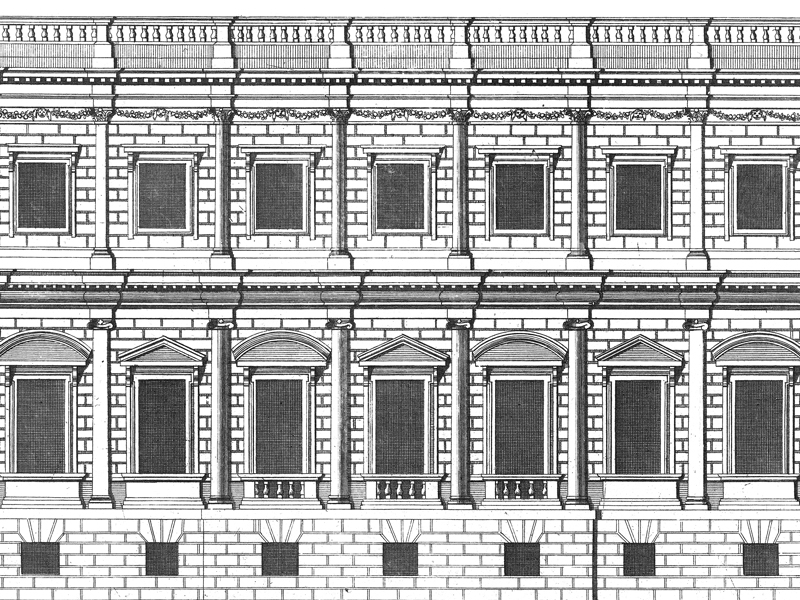Palladianism in Southern England by MRT Lecturer Dr Michael Douglas-Scott
posted on 22/08/19
Andrea Palladio is the only architect to have become an “ism”. Born in Padua in 1508 as “Andrea di Pietro della Gondola”, it was only after his arrival in Vicenza as a stonemason, that he was to be adopted by the local aristocracy as their architect and given his name “Palladio” by his mentor Giangiorgio Trissino. For them, he redesigned their town hall called the Basilica, and built town palaces and country villas. Introduced to the ruling overlords of the whole region, the Venetians, he increasingly worked for the oligarchy on their villas as well as in Venice itself, where he was responsible for some of its most prominent churches such as San Giorgio Maggiore and the Redentore.
Palladio however might have remained a regional phenomenon but for the publication of his ‘Quattro Libri dell’Architettura’ in 1570, perhaps the most influential architectural treatise ever written. It illustrated in clear and elegant form many of his own buildings, above all his domestic ones. This book was to become the bible of English classical architecture from Inigo Jones onwards.
Jones came to Vicenza in 1614 in the circle of Lord Arundel and met Palladio’s major pupil Vincenzo Scamozzi, from whom he bought many of Palladio’s drawings. He introduced the Stuart court to the style now recognised as ‘Anglo-Palladianism’. We will visit some of his few remaining buildings for the Stuarts including the Banqueting House in Whitehall and the Queen’s House at Greenwich.
His style was to be revived a century later by Lord Burlington, who on his second tour to Italy in 1719 bought up those drawings by Palladio still in Italy. He, along with Colen Campbell and William Kent, were to make Palladianism into a national, not merely a court style, with Chiswick House being its jewel-like exemplar. Palladianism was to become the uniform of the English country house and an expression of the dominance of the Whig aristocracy in the Georgian era, including that of the Prime Minster Sir Robert Walpole, at Houghton.

Houghton Hall, wood engraving c. 1880.
On this tour all of the major country houses in this style in southern and eastern England will be visited, including their apogees in Stowe, Stourhead and Holkham. These have a very different character from Palladio’s own villas and served different economic, social and political needs. They were surrounded by landscaped gardens of distinctly English character, very distant from those of the Italian Renaissance, and their interiors decorated in a much more palatial fashion than their sixteenth-century Venetian counterparts.
Through pattern books, Palladianism entered into the DNA of English architecture at vernacular level and became, according to Swift, a “straightjacket”. Even though architects like the Adam brothers in the neo-classical period set out to free themselves from these bonds, Palladianism was to remain the fundamental grammar of British architecture throughout the eighteenth century, and was exported from these isles to Jefferson’s America, rather than directly from Palladio’s homeland. In this way a distinctive international style was born, one that has come to be identified with Classicism (and even Republicanism) itself, making Palladio into an “ism”. This tour will provide a comprehensive spectrum of the English response to Palladio in the era of its greatest splendour and significance.
Dr Michael Douglas-Scott is an associate Lecturer in History of Art at Birkbeck College, specialising in 16th-century Italian art and architecture. He studied at the Courtauld and Birkbeck College, University of London and lived in Rome for several years. He has written articles for Arte Veneta, Burlington Magazine and the Journal of the Warburg & Courtauld Institutes.
He leads Palladianism in Southern England in September 2019.
View itinerary for Palladianism in Southern England
